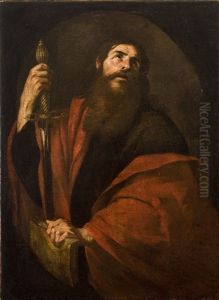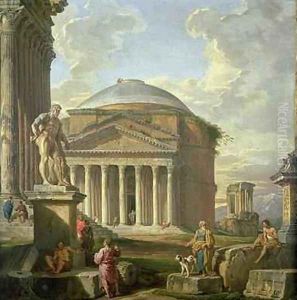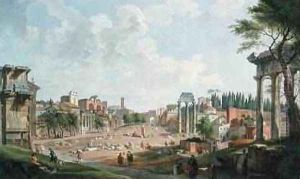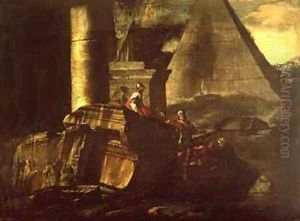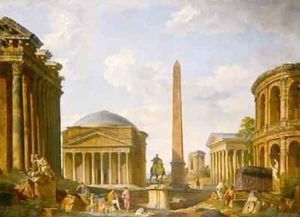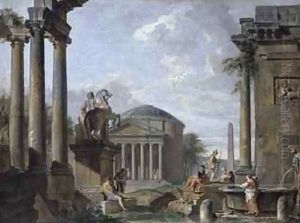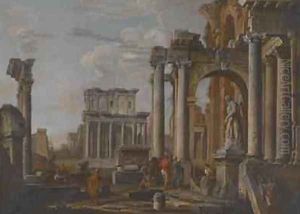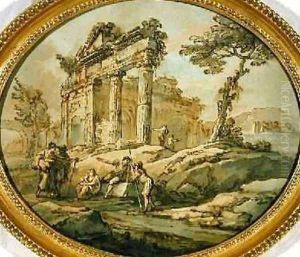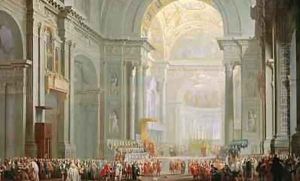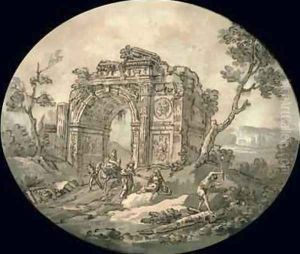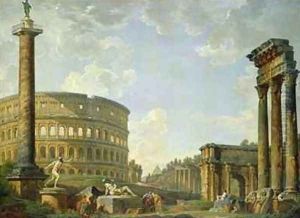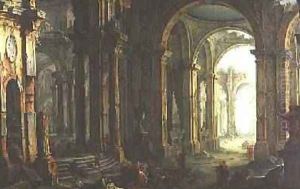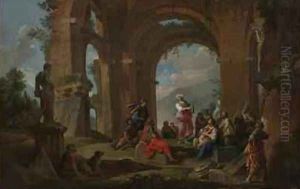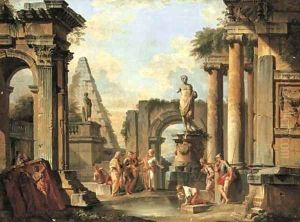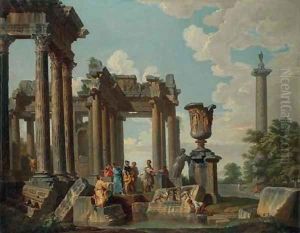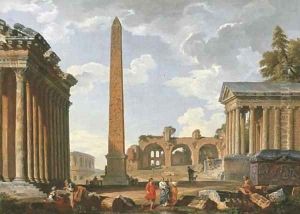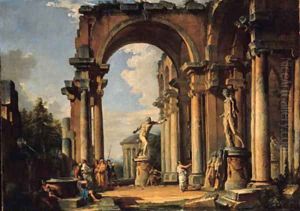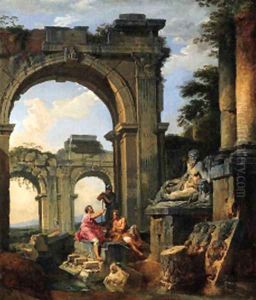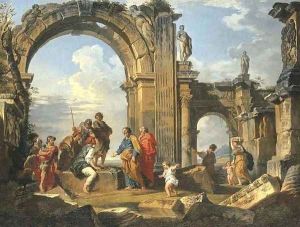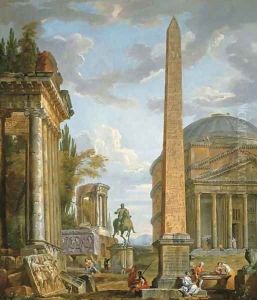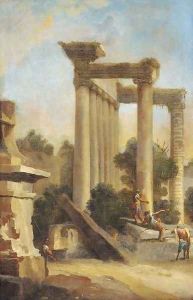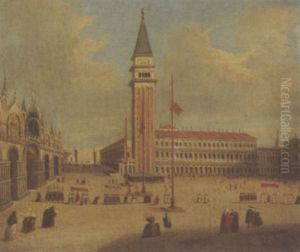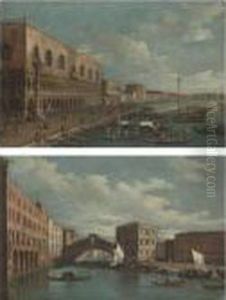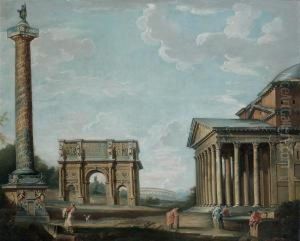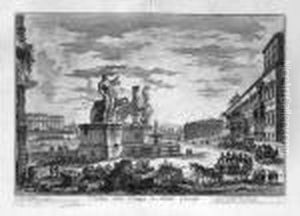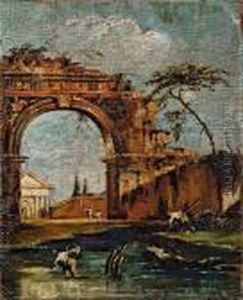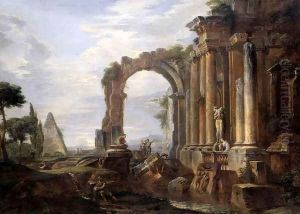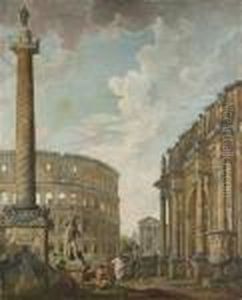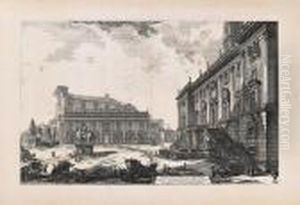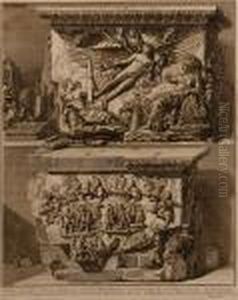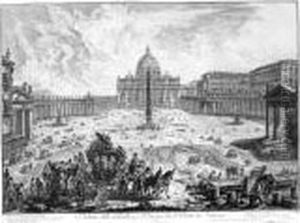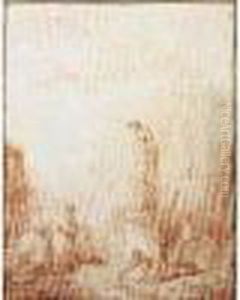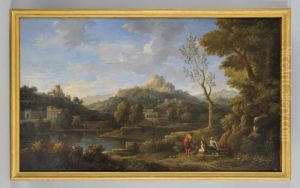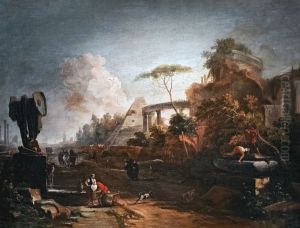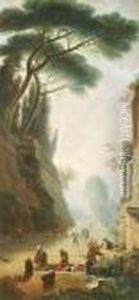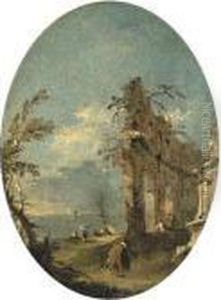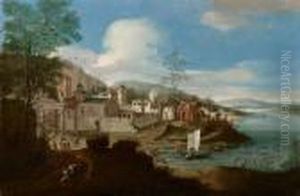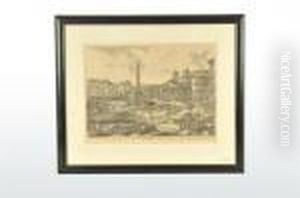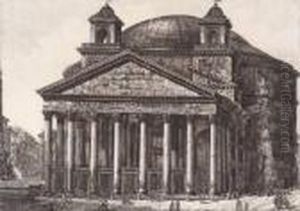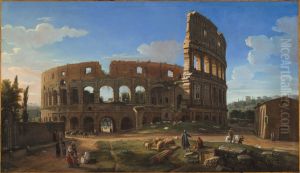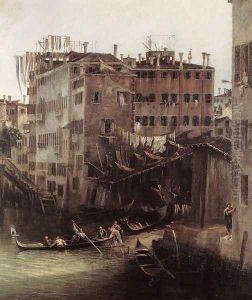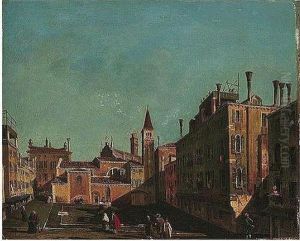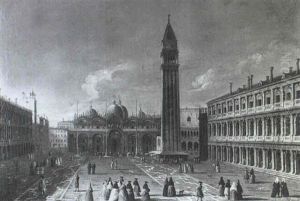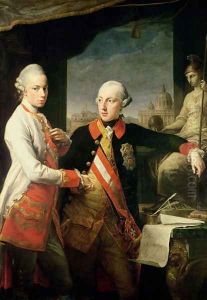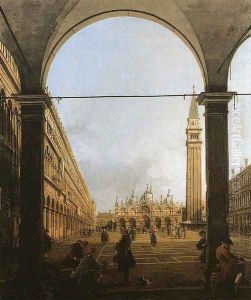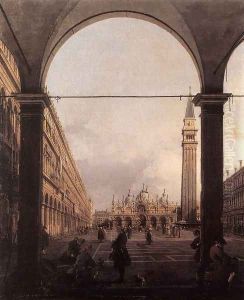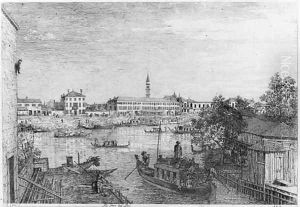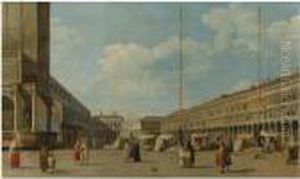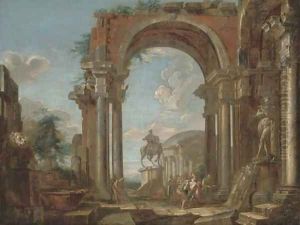





A capriccio of classical ruins with soldiers and other figures conversing by the equestrian statue of Marcus Aurelius
-
About Reproduction
Bring the timeless beauty of Giovanni Paolo Panini's A capriccio of classical ruins with soldiers and other figures conversing by the equestrian statue of Marcus Aurelius into your home with a handmade oil painting reproduction. Carefully recreated on canvas by skilled artists using traditional techniques, this piece captures the delicate brushwork, subtle light, and vibrant color of the original masterpiece. With museum-level quality and rich texture, it brings elegance and artistic depth to any space. Enjoy free shipping and make this masterpiece a part of your personal collection.
-
Original Description
Giovanni Paolo Panini’s A Capriccio of Classical Ruins with Soldiers and Other Figures Conversing by the Equestrian Statue of Marcus Aurelius is a masterful example of 18th-century Italian veduta ideata (imaginary view) painting, blending grandeur with poetic decay. The canvas immerses viewers in a romanticized Roman piazza, where crumbling colonnades and weathered statues—including a prominent replica of Marcus Aurelius’s equestrian monument—evoke the grandeur of antiquity. Soldiers, scholars, and citizens mingle amid the ruins, their animated conversations contrasting with the silent dignity of the past. Panini’s meticulous architectural detail and luminous, atmospheric lighting reflect his training as a scenographer, while the playful juxtaposition of real and fictional elements aligns with the capriccio genre’s Baroque origins. This work exemplifies Panini’s role as a bridge between documentary precision and artistic fantasy, influencing later Grand Tour painters and shaping Europe’s fascination with Roman antiquities.
For interior spaces, this painting’s monumental scale (typically around 150 x 200 cm) commands attention in high-ceilinged rooms or statement walls. Its warm ochres and earthy tones harmonize with rich wood furniture, leather accents, or neoclassical decor, while the idealized ruins inject intellectual sophistication into studies or executive offices. Consider pairing it with gilded mirrors or architectural sketches to amplify its grandeur, or balance its complexity with muted textiles for modern spaces. In a home library, the scene’s scholarly aura enhances ambiance; in a corporate lobby, it subtly conveys legacy and authority. Opt for ornate frames in gold or distressed finishes to echo its classical spirit, ensuring lighting highlights its dramatic contrasts—making Panini’s capriccio both a focal point and a timeless conversation piece.
-
Lead Time & Shipping
When you order this oil painting replica, it typically takes 2-3 weeks to paint. If the artwork is more complex, it might need a little more time to ensure the best quality. Once it's ready, we'll send you a photo for your approval. After you give the green light, we'll ship it to you for free.
-
Return & Refund
We believe in the quality of our hand-painted oil painting reproductions, and your satisfaction is our priority. If for any reason, you are not completely satisfied with your purchase, we offer a 45-day return policy. You can return your artwork within 45 days of receipt and receive a full refund. Please note that the artwork must be returned in the original packaging and in the same condition as it was received.





















